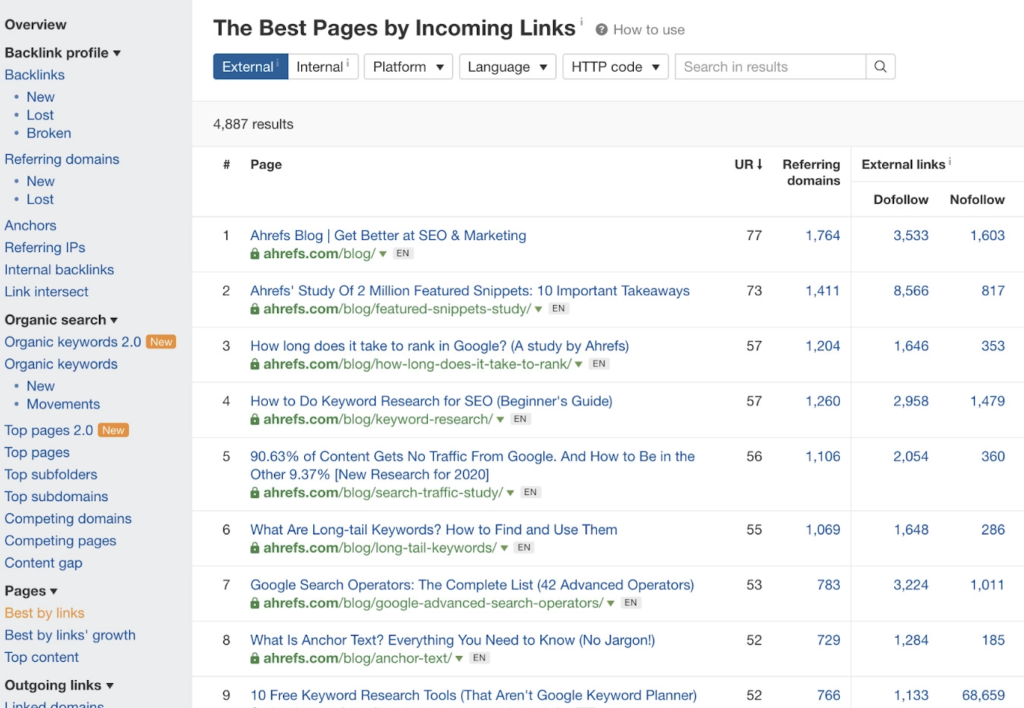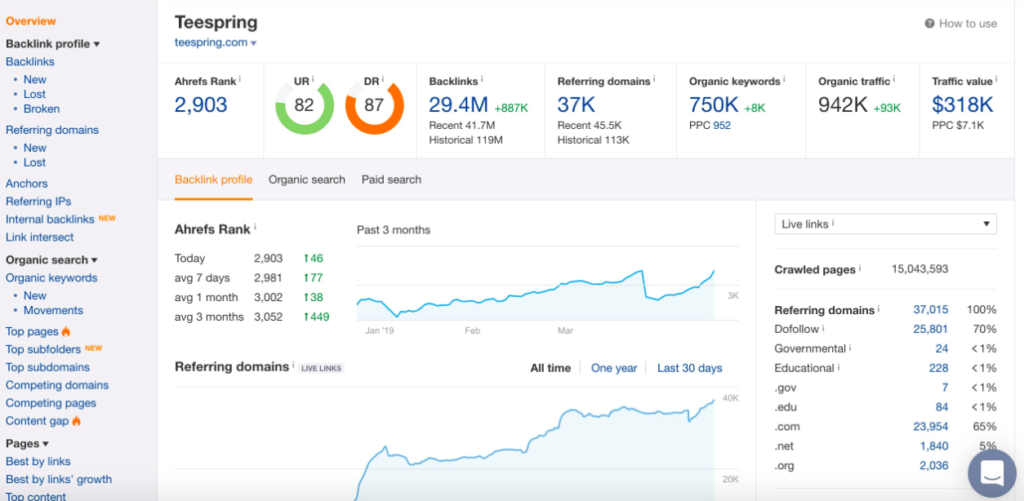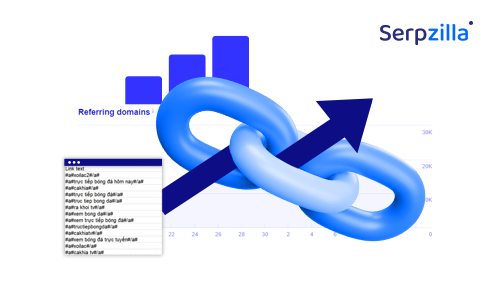Backlink Strategy Basics

In this article you’ll get to know about the easy way to design the base of your link building strategy along with some basic definitions and concepts.
In link building, like in other processes, you have to start with something, and have a point of departure. That’s what we are going to help you with today.
Link building is a technique you use to drive traffic to your website from other websites. It is implemented by placing backlinks to your website on third-party resources. The more relevant and authoritative those resources are, the better for promotion of the website and its SERP ranking.
Before you start
You need to understand that you can’t promote websites with backlinks alone. So, especially if you’re a beginner, ask yourself first: is the resource I’m working on optimized enough? Is it technically sound? Am I sure I made/missed no serious mistakes? Backlinks might provide you with a great boost, but only if you do the preliminary work. Otherwise the boost will only be temporary.
So, before link building, you might want to:
- Make sure you audit your website before you get to the link building strategy;
- Make sure the product owner understands product value and how to market it (including but not limited to market/niche research, target customers, competition, etc);
- Make sure that content is on point – from copywriting to visuals (clear and concise);
- Make sure the value proposition is clear to every potential customer, so there’s no drop-off due to miscommunication.
All these aspects will guarantee the traffic will be more consistent and less users will bounce back. Otherwise your link building efforts might be compromised.
Let’s begin
So how should we choose our potential link sources to make sure our website does good after the process? Like many other things in life – watch what others do. In this case, your competition. Competitor research will be the pillar stage of our strategy.
The stages of the link building strategy are as follows:
- Competitor research
- Designing a plan for placing backlinks
- Selecting referring domains
- Placing backlinks
Why start with your competitors? Because you need to get the general idea of where you and your competitors stand. What is it that they do, that makes them succeed. That’s how you’ll know what it is you need to do to be at least as good on the same queries.
Search engines carefully check the quality and quantity of backlinks. An excessive number of backlinks from low-quality resources may have your website penalized by Google and give you nothing but headache for months on end. So, we recommend focusing on top competitors, who are most likely to have a high quality link profile, as a guarantee for a reliable link building strategy to emerge.
You will need to look at:
- what referring domains are best for your business;
- how many backlinks and referring domains you will need;
- how many backlinks you can safely place on a monthly basis;
- what anchor you should use and which ones are most relevant.
Find out who are your competitors
There’s a lot of online services for this, but you can easily do it yourself this way: enter a query into a search engine and take domains from the top 10 results. But pay attention to excluding aggregator websites or classifieds platforms from your selection!

To obtain relevant data, you will have to research 5-10 competitors. Choose only companies that are similar to you in size and range. Large retail chains and small online stores occupy niches too different to make it useful for the research. So don’t forget to weed out irrelevant competitors.
Analyze their referring domains and backlinks
Once you’re done with the list of competitors, see how many referring domains they use, and what backlinks they bought from them. Also check the ratio (%) of each referring domain to the total link mass. It might be useful to evaluate the efficiency of those link sources and prioritize.
To find this information you can use online services like:
- Ahrefs.com
- Majestic SEO
- SeoLib
- Serpstat
- etc
We go with Ahrefs*. It’s convenient, functional and overall solid for analyzing web resources. Ahrefs can help you track many metrics, but we’ll use it to show you how to work with and what to look at when dealing with link profiles.
*However, we should note that it might be pricey for some people. Subscription plans start at $99 per month.
Two metrics you need to peep from competitors first: referring domains and the total number of backlinks. In the Ahrefs, go to the Overview report and look for the data on the counters.

Referring domains are unique domains that refer to our website via a link. Backlinks are direct URLs to specific pages of your website. So, it’s only logical that there can be several times more backlinks than referring domains.
You will notice that the top 5 websites are often rich with backlinks and referring domains. No need to get upset: for example, in some niches, websites with just a hundred backlinks, but with good internal and/or behavioral factors, often get to the top. And some niches have such a stiff competition, that even a thousand quality backlinks might not get you to the top 10. This is yet another proof that SEO is a complex measure, and you can’t rely on one approach or method for every task.
So we analyze all competitors and export data to use it in Excel or Google Sheets. We fill in numbers of referring domains and backlinks for each competitor and then we average the data across all the competition. That’s going to be an important metric for our strategy development.
So, you will have a sheet looking like this:

Sorting Backlinks
The next step is to examine the link distribution of your competitors. This can be done using Best by links in the Pages section of the sidebar. What’s important for us here is understanding how many of the backlinks lead to the main or to the product pages.

The more data we collect, the more accurate and relevant the link strategy will be. If you have time, analyze a few dozen pages of each website. Analyzing ten would be perfect, but regardless of the number your goal here is to analyze your competitors, their pages and look at how they disperse semantic core among those pages, which queries they took for specific ones.
Now we need to see and analyze how many backlinks and referring domains each page has in relation to total across the whole website.
Fill in the data and your sheet should look something like this:

You’ll soon get the idea of how we will use these numbers to plan our link-building steps.
Growth dynamics
Now we have our total numbers and page numbers of referring domains and backlinks. What else can we look at to gain more insight? Dynamics. How many backlinks should the resource gain monthly?
Why is it so important? Because search engine algorithms don’t like when people try to game the system. So, if you increase your link mass too quickly, you will likely get the website penalized. Going slow isn’t too good either, and for both the owner and the SEO specialist. So where’s the sweet spot? To answer that question, we will again analyze our competitors and use this data as a guideline to follow.
Keep in mind:
- your competitors’ metrics are merely a reference point for you;
- you main objective is to surpass your competition, so also account for that in your analysis;
- the average minimum to provide a boost is around 30-50 quality backlinks.
First of all, let’s refer to the Overview page:

That’s where we look at how many backlinks and referring domains our competitor added over the year and average it accordingly. Taking three numbers (peak, mid, low) for the calculation would suffice. For example, if the peak month is 80 backlinks, mid-range number is 45 and the poorest month has brought 10. So, (80+45+10/3)=45, and we get 45 backlinks monthly as our average growth speed for the website. Now we need to take the total number of backlinks and divide it by 45. That’s how we now know the time it should take us to safely develop the same link mass for our website. Now take all competitors and average all of their data.
Fill in the data similarly to how we did before and that’s what you should get:

Anchor list
An anchor list is a list of words and phrases that make up the text part of the link, the one the user sees, reads and clicks on. Compiling such a list is crucial, since search engines pay attention to the words you “embed” in the URL.
To do this we’ll go to the Anchors section in the Ahrefs sidebar and then export the data in Excel format.
Before we move on, there can be two types of links: those anchors that contain keywords and those that don’t.
Anchor links with keywords contain commercial or informational queries: “buy”, “price”, “green bike”, “used piano”, etc.
Anchor links with no keywords (non-anchor links) are represented by four of its subtypes:
- Branded. The name of the company or product is used as the anchor (“Ahrefs”, “Ahrefs”, “Ahrefs.com”).
- Common phrases. E.g.: the anchor might read “Read more”, “Here”, “More”, etc – no relevance to any possible query.
- Direct URL without text (=no actual anchor): https://ahrefs.com/.
- Image links.
Non-anchor links are not bad at all, but they’re not something we should strive for to achieve maximum results. Anchor links with keywords drive ranking weight up better compared to non-anchors. The algorithms of search engines are watching and processing it. Long anchors that are way too specific or strange anchors like “buy car cheap red” might alert search engines.

Once we export anchor data from all our competitors, we, just like before, compile information in a single spreadsheet. We fill in the domain and link data for each anchor. After that, we tag each anchor according to its type. You can tag links not just by types of anchor, but also by extra categories – picture, brand name, “garbage” (gibberish anchors in the URL).
Should look something like this:

All the backlinks are collected and now we need how many backlinks of each type a competitor has, percentage-wise. Our goal here is to figure out a number of backlinks of each type that we need to produce on other websites.
1. We calculate shares on our competitor’s website:

2. Then we use these percentages to calculate the exact quantity of each type of link we need for our website:

Now you know exactly how many backlinks you need to place of each type, you’re ready to go. And you now even tell what backlinks you could get for free via directories or submissions and what backlinks you will likely have to buy. You can now head to link exchange with purpose, or start reaching out for websites to submit your content, for example.
Summary
- look at top competitors you find on Google;
- figure out how many domains and backlinks you need;
- analyze growth dynamics of your competitors to get a reference for how you should pace your growth;
- analyze anchors to use the relevant ones in your backlinks;
- get to work.
In conclusion, we’d like to mention that there are no universal algorithms for link building. Avoid content claiming otherwise. Developing a strategy is just the first, not to mention theoretical, part of working with backlinks.









